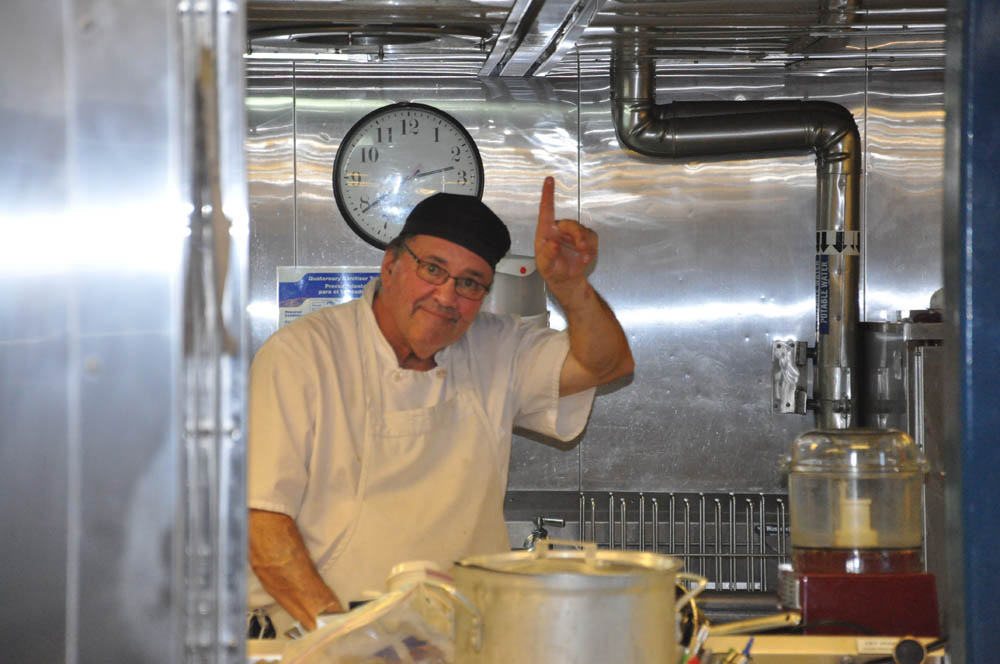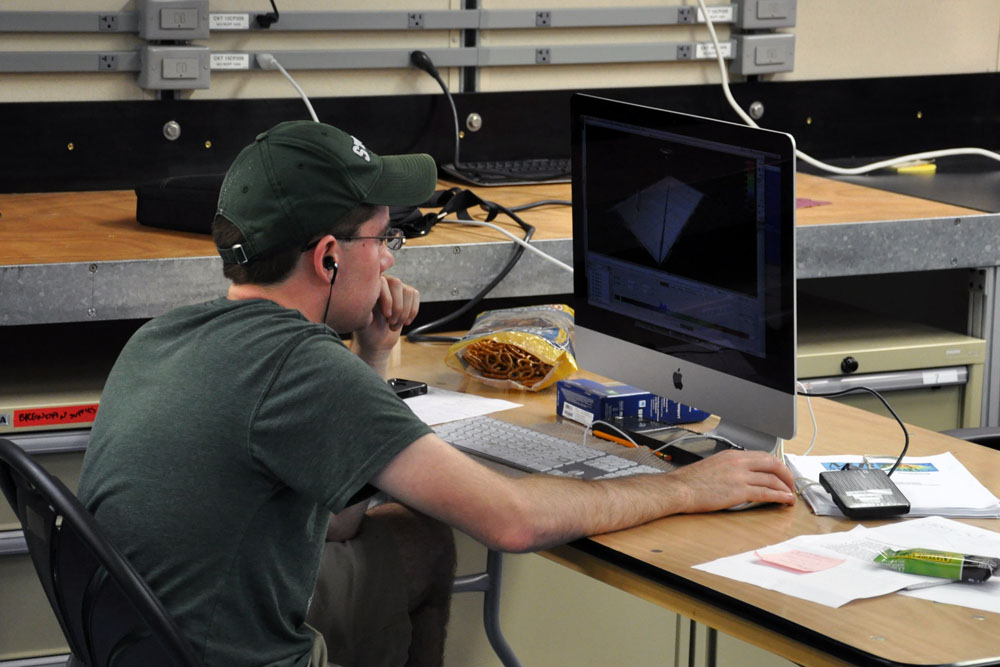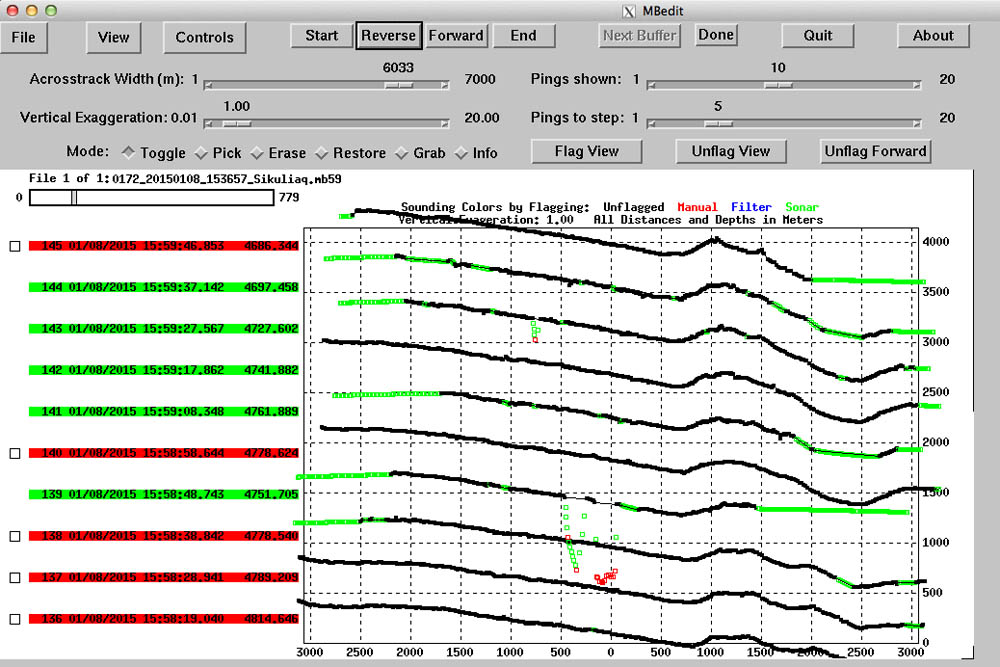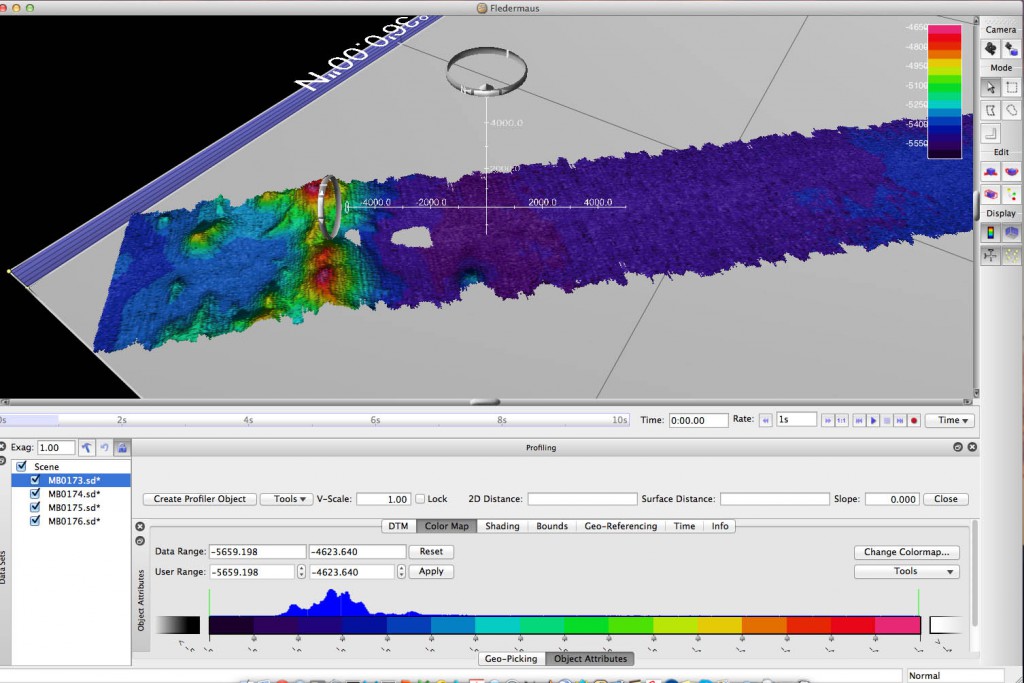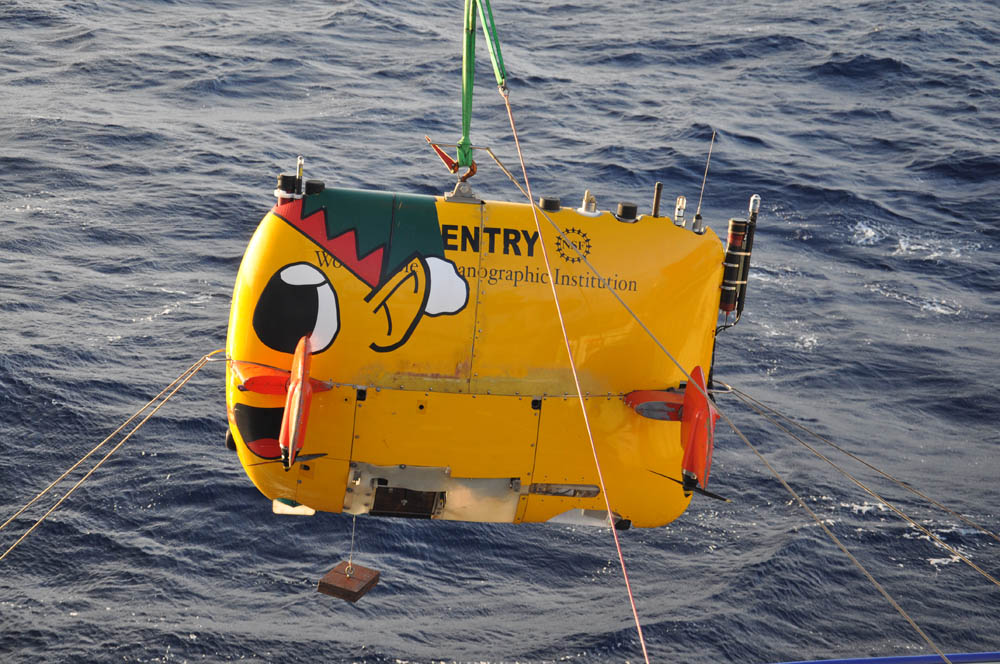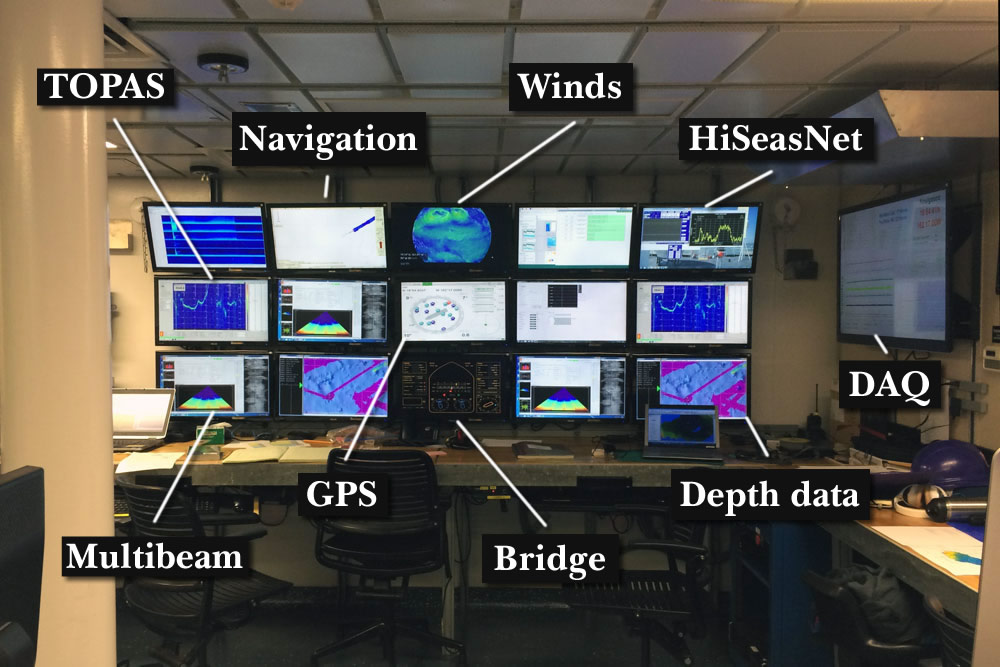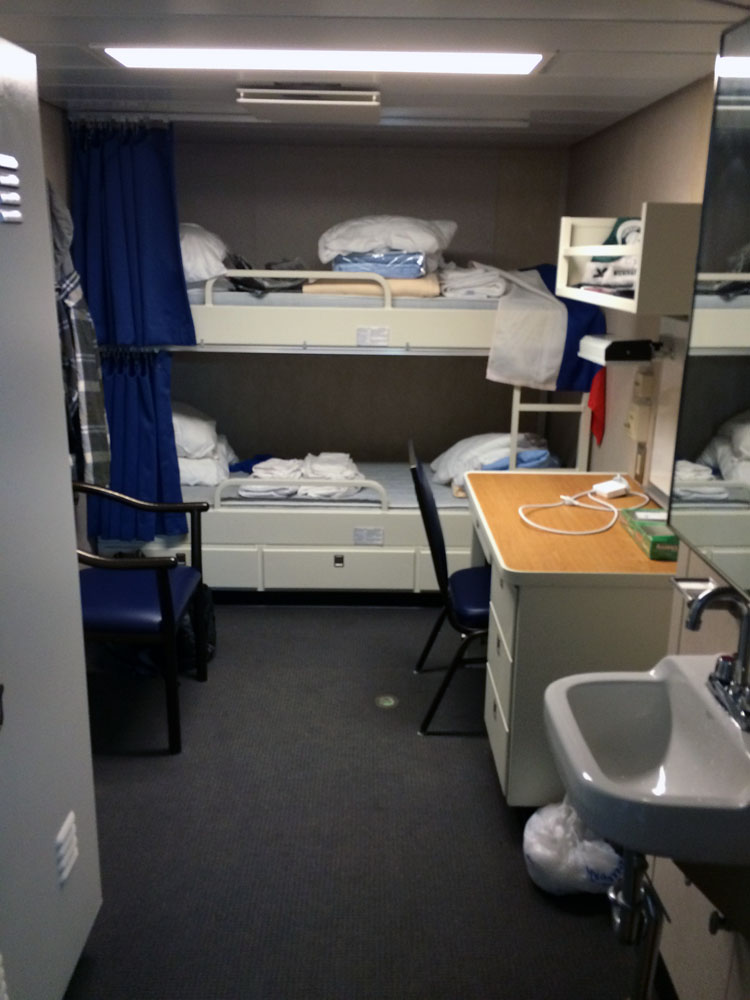Over twenty sailors covering a round-the-clock watchstanding schedule; a couple dozen scientists and engineers pulling fieldwork-level hours — making sure all these people have a variety of hearty healthy food available when they need it is the challenge facing, and admirably met by, the galley.
Thanks to chief steward Matt for a generous overview of the role of the galley

